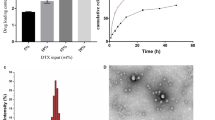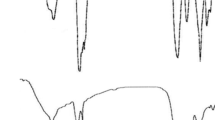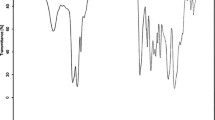Abstract
Purpose
In order to improve the therapeutic efficiency of the chemotherapeutic drug paclitaxel in tumors, a folate-based Paclitaxel nanoemulsion (FNEs) was developed for tumor targeted treatment.
Methods
In this study, we designed a folate-targeted nanoemulsion (folate/PEG-DSPE/nanoemulsion, FNEs) based on the traditional nanoemulsion using the principle of long-circulation targeting receptor mediated. The nanoemulsion (folate/PEG-DSPE/nanoemulsion, FNEs) was fabricated using high-pressure homogenization with a microfluidizer.
Results
The nanoemulsion (folate/PEG-DSPE/nanoemulsion, FNEs) can improve the delivery efficiency of nanocarriers at the tumor site by virtue of the high expression of folate receptors on the tumor surface. Malvern Nanoseries device and transmission electron microscopy (TEM) analyses showed that the nanoemulsions were spherical with an average diameter of 140 nm. The nanoemulsions can effectively carry paclitaxel (PTX) with an encapsulation rate of about 95%. And in vitro experiments have shown that it can efficiently increase the uptake of PTX in 4 T1 breast cancer cells and FNEs had a targeting capability hundredfold higher than that of PTX-loaded nanoemulsions (PTX-NEs) without folate. In vivo experiments have shown that the pharmacokinetic parameters of FNEs were better than those of other PTX groups and FNEs can significantly enhance circulation time in the body of the subcutaneously implanted 4 T1 breast cancer in mice, increase the accumulation of chemotherapy drugs at tumor sites and effectively inhibit tumor growth with lower system toxicity.
Conclusions
This study can effectively improve the therapeutic efficiency of chemotherapy drugs for tumors, and provide an useful reference for solving the problem of low efficacy of chemotherapy drugs in clinical treatment of tumors.

Schematic representation of Folic acid/PEG-DSPE/nano-emulsion (FNEs) specifically target tumor cells and enhanced anti-tumor effects






Similar content being viewed by others
References
Muhammad AH, Wicha MS, Adalberto BH, Morrison SJ, Clarke MF. Prospective identification of tumorigenic breast cancer cells. Proc Natl Acad Sci U S A. 2003.
Ji T, Li S, Zhang Y, Lang J, Ding Y, Zhao X, et al. An MMP-2 responsive liposome integrating Antifibrosis and chemotherapeutic drugs for enhanced drug perfusion and efficacy in pancreatic Cancer. ACS Appl Mater Interfaces. 2016;8(5):3438–45.
Armiñán A, Palominoschätzlein M, Deladriere C, Arroyocrespo JJ, Vicenteruiz S, Vicent MJ, et al. Metabolomics facilitates the discrimination of the specific anti-cancer effects of free- and polymer-conjugated doxorubicin in breast cancer models. Biomaterials. 2018;162:S0142961218300930.
Qiu Y, Park K. Environment-sensitive hydrogels for drug delivery. Adv Drug Deliv Rev. 2012;64(3):49–60.
Zhang H, Dou J, Zhai Y, Liu A, Zhai G. Advances in the formulations of non-injection administration of docetaxel. J Drug Target. 2014;22(2):87–94.
Zwicke, G.L., M. G Ali, and C.J. Jeffery, Utilizing the folate receptor for active targeting of cancer nanotherapeutics. Nano Reviews, 2012. 3(3).
Nam J, Son S, Ochyl LJ, Rui K, Schwendeman A, Moon JJ. Chemo-photothermal therapy combination elicits anti-tumor immunity against advanced metastatic cancer. Nat Commun. 2018;9(1):1074.
Abozeid SM, Hathout RM, Abou-Aisha K. Silencing of the metastasis-linked gene, AEG-1, using siRNA-loaded cholamine surface-modified gelatin nanoparticles in the breast carcinoma cell line MCF-7. Colloids & Surfaces B Biointerfaces. 2016;145:607–16.
Qin SY, Zhang AQ, Cheng SX, Rong L, Zhang XZ. Drug self-delivery systems for cancer therapy. Biomaterials. 2017;112:234–47.
Fofaria NM, Qhattal HSS, Liu X, Srivastava SK. Nanoemulsion formulations for anti-cancer agent piplartine—characterization, toxicological, pharmacokinetics and efficacy studies. Int J Pharm. 2016;498(1–2):12–22.
Chen Y, Cheng Y, Zhao P, Zhang S, Li M, He C, et al. Co-delivery of doxorubicin and imatinib by pH sensitive cleavable PEGylated nanoliposomes with folate-mediated targeting to overcome multidrug resistance. Int J Pharm. 2018;542(1–2):266–79.
Marchetti, C., I. Palaia, M. Giorgini, M.C. De, R. Iadarola, L. Vertechy, et al., Targeted drug delivery via folate receptors in recurrent ovarian cancer: a review. Onco Targets Ther, 2014. 2014(default): p. 1223–1236.
Low PS, Antony AC. Folate receptor-targeted drugs for cancer and inflammatory diseases. Adv Drug Deliv Rev. 2004;56(8):1055–8.
Krystofiak ES, Matson VZ, Steeber DA, Oliver JA. Elimination of tumor cells using Folate receptor targeting by antibody-conjugated, gold-coated magnetite nanoparticles in a murine breast Cancer model. J Nanomater. 2012;2012:1–9.
Afzal SM, Shareef MZ, Dinesh T, Kishan V. Folate-PEG-decorated docetaxel lipid nanoemulsion for improved antitumor activity. Nanomedicine. 2016;11(16):2171–84.
Venkateshwarlu I, Prabhakar K, Ali M, Kishan V. Development and in vitro cytotoxic evaluation of parenteral docetaxel lipid nanoemulsions for application in cancer treatment. PDA J Pharm Sci Technol. 2010;64(3):233–41.
Navid M, Mahmoud Reza J, Mohammad Yahya HB, Shiva G, Bizhan MN. Docetaxel-loaded solid lipid nanoparticles: preparation, characterization, in vitro, and in vivo evaluations. J Pharm Sci. 2013;102(6):1994–2004.
Zhao P, Wang Y, Kang X, Wu A, Yin W, Tang Y, et al. Dual-targeting biomimetic delivery for anti-glioma activity via remodeling the tumor microenvironment and directing macrophage-mediated immunotherapy. Chem Sci. 2018;9:2674–89.
Innocente N, Marchesini G, Biasutti M. Effect of high-pressure homogenisation on the retention of selected aroma compounds in model dairy emulsions. International Journal of Food Science & Technology. 2015;49(9):1992–2000.
Washington C, Davis SS. The production of parenteral feeding emulsions by microfluidizer. Int J Pharm. 1988;44(1–3):169–76.
Chen, L., B. Chen, L. Deng, B. Gao, Y. Zhang, C. Wu, et al., An optimized two-vial formulation lipid nanoemulsion of paclitaxel for targeted delivery to tumor. Int J Pharm: p. S0378517317309559.
Xia J, Du Y, Huang L, Chaurasiya B, Tu J, Webster TJ, et al. Redox-responsive micelles from disulfide bond-bridged hyaluronic acid-tocopherol succinate for the treatment of melanoma ☆ ☆☆. Nanomed Nanotechnol Biol Med. 2018;14(3):713–23.
Huang L, Chaurasiya B, Wu D, Wang H, Du Y, Tu J, et al. Versatile redox-sensitive pullulan nanoparticles for enhanced liver targeting and efficient cancer therapy. Nanomedicine. 2018;14(3):1005–17.
Song X, Wan Z, Chen T, Fu Y, Jiang K, Yi X, et al. Development of a multi-target peptide for potentiating chemotherapy by modulating tumor microenvironment. Biomaterials. 2016;108:44–56.
Zhong Y, Dimde M, Stöbener D, Meng F, Deng C, Zhong Z, et al. Micelles with Sheddable dendritic Polyglycerol sulfate shells show extraordinary tumor Targetability and chemotherapy in vivo. ACS Appl Mater Interfaces. 2016;8(41):27530–8.
Tang, B., J.L. Zaro, Y. Shen, Q. Chen, Y. Yu, P. Sun, et al., Acid-sensitive hybrid polymeric micelles containing a reversibly activatable cell-penetrating peptide for tumor-specific cytoplasm targeting. Journal of Controlled Release Official Journal of the Controlled Release Society, 2018: p. S0168365918301986.
Wang H, Agarwal P, Zhao S, Yu J, Lu X, He X. Combined cancer therapy with hyaluronan-decorated fullerene-silica multifunctional nanoparticles to target cancer stem-like cells. Biomaterials. 2016;97:62–73.
Gao J, Xie C, Zhang M, Wei X, Yan Z, Ren Y, et al. RGD-modified lipid disks as drug carriers for tumor targeted drug delivery. Nanoscale. 2016;8(13):7209–16.
Park JH, Cho HJ, Yoon HY, Yoon IS, Ko SH, Shim JS, et al. Hyaluronic acid derivative-coated nanohybrid liposomes for cancer imaging and drug delivery. Journal of Controlled Release Official Journal of the Controlled Release Society. 2014;174(1):98–108.
Yang X, Grailer JJ, Pilla S. Tumor-targeting, pH-responsive, and stable Unimolecular micelles as drug Nanocarriers for targeted Cancer therapy. Bioconjug Chem. 2010;21(3):496–504.
Liu Y, Li K, Pan J, Liu B, Feng SS. Folic acid conjugated nanoparticles of mixed lipid monolayer shell and biodegradable polymer core for targeted delivery of Docetaxel. Biomaterials. 2010;31(2):330–8.
Han L, Tang C, Yin C. pH-responsive Core-Shell structured nanoparticles for triple-stage targeted delivery of doxorubicin to tumors. ACS Appl Mater Interfaces. 2016;8(36):23498–508.
Gullotti E, Yeo Y. Extracellularly activated nanocarriers: a new paradigm of tumor targeted drug delivery. Mol Pharm. 2008;6(4):1041.
Couvreur P. Nanoparticles in drug delivery: past, present and future ☆. Adv Drug Deliv Rev. 2013;65(1):21–3.
Syu WJ, Yu HP, Hsu CY, Rajan YC, Hsu YH, Chang YC, et al. Improved photodynamic Cancer treatment by Folate-conjugated polymeric micelles in a KB Xenografted animal model. Small. 2012;8(13):2060–9.
Author information
Authors and Affiliations
Corresponding author
Ethics declarations
Acknowledgments and Disclosures
The authors have no conflict of interest to declare.
Additional information
Publisher’s Note
Springer Nature remains neutral with regard to jurisdictional claims in published maps and institutional affiliations.
Rights and permissions
About this article
Cite this article
Song, B., Wu, S., Li, W. et al. Folate Modified Long Circulating Nano-Emulsion as a Promising Approach for Improving the Efficiency of Chemotherapy Drugs in Cancer Treatment. Pharm Res 37, 242 (2020). https://doi.org/10.1007/s11095-020-02811-1
Received:
Accepted:
Published:
DOI: https://doi.org/10.1007/s11095-020-02811-1




